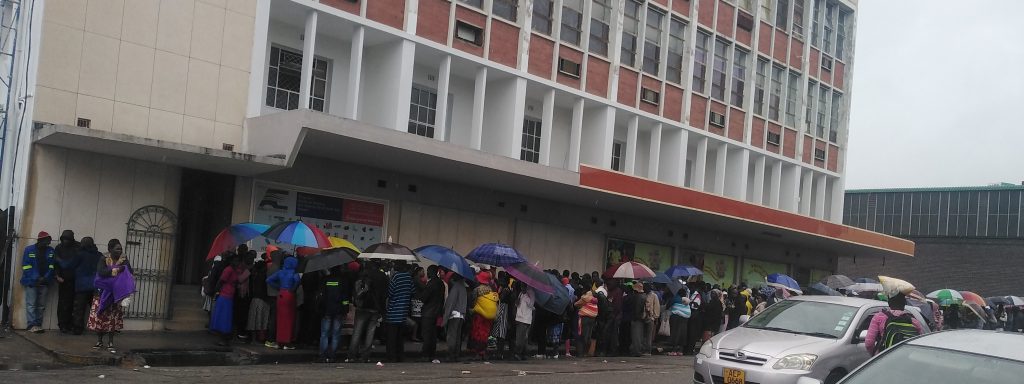Each night Rutendo Mtandavari, a widow with five children, sleeps outside the gates of the mealie meal trader, Victoria Foods, in the capital Harare, as she waits for days on end to buy mealie meal.
Source: Zimbabwe’s Mealie Meal Shortage Hits Women – The Zimbabwean
Queues at Victoria Foods are never-ending as hundreds of people wait for days to purchase the staple crop. Rutendo told the Zimbabwean that she puts her eldest child in the queue at night, in order to keep her place for the next day, while she sleeps with her other children in one of the office corridors across the streets.
“The market has become my temporary home with my children because I have no energy to walk back and forth every day. I would rather sleep here and wait for the maize,” said Rutendo from Chitungwiza, some 30 km from Harare.
This nation has been hit by a maize shortage after two consecutive dry spells. Maize is the most important food crop, accounting for 90 percent of all caloric intake.
Rutendo may not be willing to walk from Chitungwiza every day, but each morning before the sun rises, a four-month pregnant Memory Jamu wakes up and walks 40 km to Victoria Foods in the CBD.
A few weeks ago the mother of three was so weak that she fainted while standing in the long Victoria Foods queue.
“I felt very weak and tired,I started shaking violently as I stood on the queue and I don’t know what happened after that,” Rutendo told the Zimbabwean as she lay in her hospital bed in the over-crowded female ward at Harare Hospital.
But Rutendo’s plight is hardly unique. About five in 10 residents in Chitungwiza told the Zimbabwean their children have gone hungry over the last few months, not only because of the mealie meal shortage, but because they cannot even afford to buy it when it is available.
A 10-kg bag of mealie meal used to cost around $50, but now the price has increased to $70 – way above the earnings of those living in dire poverty.
In a country where women make up 70 percent of the farming workforce and are the breadwinners in their families, women and children are bearing the brunt of the high food prices.
According to the Grain Millers Association chairman Tafadzwa Msarara, “the maize-meal situation will stabilise in the next three to five weeks following plans to import close to 100 000 tonnes of maize using free funds”.
The two consecutive dry spells and corruption in the distribution and supply of fertiliser for the subsidy programme have cut the bumper harvests and affected yields.
“During the last two years under the administration of President Mnangagwa, the fertiliser inputs subsidy programme was corrupted and the targeted families did not benefit because fertiliser was diverted. Secondly, two droughts, especially along with the country’s maize belts, affected the harvests,” said a disgruntled farmer.
According to Zimbabwe Vulnerability Assessment Committee (ZimVAC), 5.5 million people, 38 percent of the rural population, is currently facing food insecurity and urban food insecurity is now affecting 2.2 million people.
The post Zimbabwe’s Mealie Meal Shortage Hits Women appeared first on Zimbabwe Situation.
